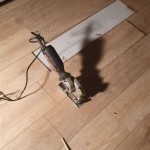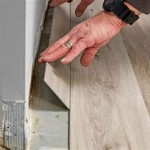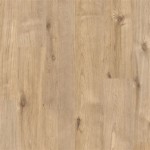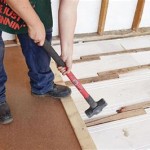Essential Aspects of Installing Bamboo Flooring On Concrete
Bamboo flooring, a popular and eco-friendly choice, can enhance the beauty and durability of your home. When installing bamboo flooring on concrete, careful preparation and attention to detail are crucial. This article provides comprehensive tips to ensure a successful and long-lasting installation.
1. Moisture Preparation
Concrete is prone to moisture transmission. To prevent moisture damage to your bamboo flooring, install a moisture barrier before laying the flooring. A polyethylene vapor barrier of at least 6 mils thickness is recommended. Ensure proper ventilation by providing a 1-inch gap between the concrete and the vapor barrier.
2. Floor Leveling
Uneven concrete floors can cause buckling and other issues in your bamboo flooring. Check for any unevenness using a level and straightedge. If necessary, use a self-leveling compound to smooth out the surface. Allow the compound to dry completely before proceeding with the installation.
3. Underlayment Installation
An underlayment layer provides cushioning, moisture protection, and sound insulation. Choose an underlayment designed specifically for bamboo flooring, such as a cork or rubber-based underlayment. Roll out the underlayment over the vapor barrier and secure it using tape or adhesive.
4. Expansion Gap
Bamboo flooring expands and contracts with changes in temperature and humidity. To prevent buckling, leave an expansion gap of at least 1/4 inch around the perimeter of the room and at doorways. Use spacers to maintain the gap during and after installation.
5. Adhesive Selection
Proper adhesive is essential for the long-term stability of your bamboo flooring. Choose a construction adhesive specifically designed for bamboo flooring. Follow the manufacturer's instructions carefully regarding the application method and required drying time.
6. Installation Technique
Begin the installation by laying the first row of planks along one wall. Use a tapping block and a rubber mallet to gently tap the planks into place. Offset the end joints of adjacent planks for added strength. Continue laying subsequent rows, ensuring that the end joints are staggered.
7. Trimming and Edging
Once the flooring is laid, use a circular saw or a flooring cutter to trim the planks around obstacles such as walls and doorways. Install baseboards or edge molding to cover the expansion gap and enhance the finished look.
8. Finishing Touches
To protect the bamboo flooring and enhance its appearance, apply two coats of a water-based polyurethane finish. Allow each coat to dry completely before applying the next. Once dry, your bamboo flooring is ready to enjoy and admire.

Beginners Guide To Installing Bamboo Flooring The Company

Installation Of Gluedown Bamboo Flooring And Favorite Tips For A Better Install

Installing Bamboo Flooring On Concrete

Glue Down Installation Bamboo Hardwood Floor Over Concrete Slab Wood Sub

Beginners Guide To Installing Bamboo Flooring The Company

Diy A Complete Guide To Installing Wooden Flooring On Concrete

Can I Install Bamboo Flooring Over Concrete The Company

Everything You Need To Know Before Installing Bamboo Flooring

How To Fit Bamboo Flooring Onto Concrete The Company

Installing Bamboo Flooring On Concrete
See Also






